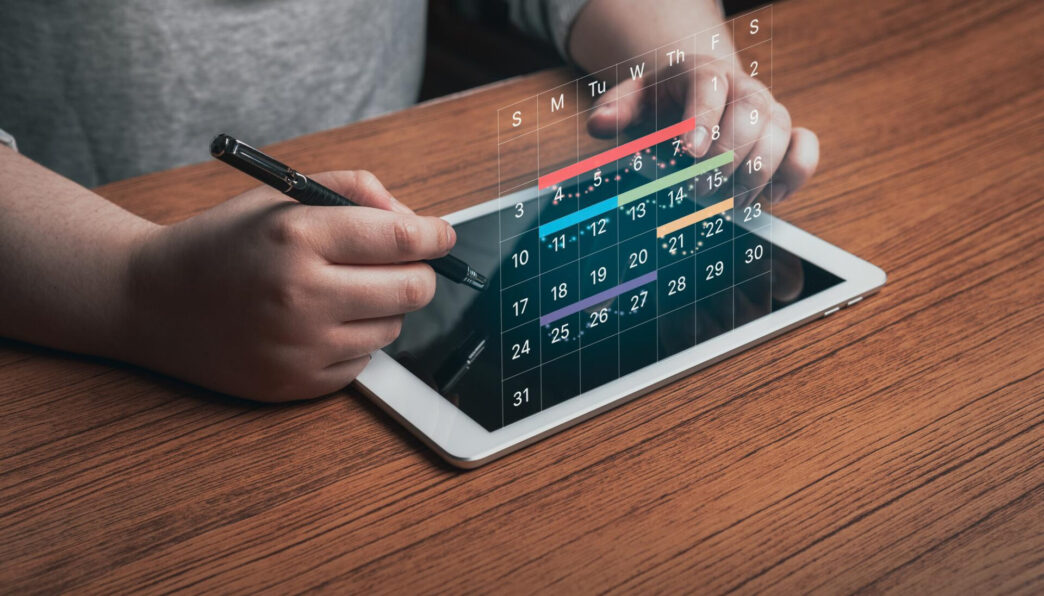Start Your Week with Purpose and Productivity
Imagine opening your planner on a Sunday evening and knowing exactly how your upcoming week will unfold—your top priorities, key tasks, personal goals, and even time carved out for rest. No more frantic mornings or forgotten deadlines. Just clear direction, balance, and control.
That’s the power of using the best weekly planner for productivity—a tool that doesn’t just hold your schedule but transforms how you live and work each day.
But here’s the truth: simply having a planner isn’t enough. To truly benefit, you need to know how to organize your week, design a structure that works for your unique lifestyle, and use it to maximize productivity without burnout.
In this guide, you’ll uncover:
✔️ What separates a great weekly planner from an average one
✔️ How to use time-blocking and weekly planning tips that high-performers swear by
✔️ Simple but powerful productivity planner setups
✔️ Real strategies to create balance, reduce stress, and get more done in less time
Whether you prefer digital tools or paper journals, whether you’re managing a business or juggling studies and home life, this article will help you turn your planner into a reliable system for clarity and results.
Let’s explore how a weekly planner—used the right way—can become your most powerful productivity ally.
Why a Weekly Planner Matters
The Power of Planning
Many people underestimate the power of planning, but research suggests that structured scheduling significantly boosts productivity. According to a study published in the Journal of Applied Psychology, individuals who plan their tasks in advance are 20-25% more productive than those who don’t.
A weekly planner provides a clear roadmap for your week, helping you:
✔️ Stay focused on your goals
✔️ Reduce decision fatigue
✔️ Minimize procrastination
✔️ Create a sense of control over your time
Think of your planner as your personal assistant—always keeping you on track and ensuring nothing slips through the cracks.
How a Weekly Planner Increases Productivity
When used correctly, a planner does more than just organize tasks; it enhances productivity in multiple ways:
✅ Prioritization – Helps identify the most important tasks, ensuring you focus on what truly matters.
✅ Time Management – Encourages better allocation of time to tasks and activities.
✅ Accountability – Serves as a commitment to yourself, making it more likely that you’ll follow through.
✅ Reduced Stress – Eases mental load by transferring tasks from your mind onto paper (or digital tools).
The Psychological Benefits of Organization
Organization isn’t just about getting things done—it has profound psychological benefits:
🔹 Reduces anxiety – Knowing what’s ahead makes your workload feel more manageable.
🔹 Boosts motivation – Checking off completed tasks triggers a dopamine release, reinforcing productivity.
🔹 Increases confidence – Having a clear plan reduces the fear of missing deadlines or forgetting responsibilities.
A weekly planner isn’t just about getting organized—it’s a tool for improving your mindset, reducing overwhelm, and creating a structure that supports success.
Choosing the Right Planner
Digital vs. Paper Planners: Pros and Cons
Before diving into advanced planning techniques, it’s essential to choose the right tool. Should you use a digital planner or stick with a traditional paper planner? Let’s break it down:
| Feature | Digital Planners | Paper Planners |
|---|---|---|
| Accessibility | Syncs across devices, accessible anywhere | Requires carrying a physical book |
| Customization | Easily adjustable, can use templates | Limited to pre-designed formats |
| Reminders & Alerts | Can set automatic notifications | No built-in reminders |
| Writing Experience | Typing is faster for most people | Writing by hand improves memory retention |
| Distraction Level | Potential for distractions (social media, emails) | No digital interruptions |
Both have their advantages. If you prefer flexibility and automation, a digital planner may be best. If you like a tactile experience and better retention of tasks, a paper planner could be the way to go.
Features to Look for in a Good Weekly Planner
Whether digital or paper, a great planner should include:
✔️ Weekly and daily views – Helps you see the big picture while focusing on daily tasks.
✔️ Goal-setting sections – Keeps long-term objectives in focus.
✔️ Habit trackers – Encourages consistency with routines.
✔️ Time-blocking space – Allows for structured scheduling of tasks.
✔️ Notes and reflection sections – Helps track progress and adjust plans accordingly.
Customizing Your Planner to Fit Your Lifestyle
Your planner should adapt to your needs, not the other way around. Consider:
🖊️ Color coding – Assign different colors for work, personal life, and self-care.
📌 Stickers and symbols – Use visual cues to make your planner more engaging.
🔄 Review & Adjust Weekly – Take time every Sunday to optimize your schedule.
A well-structured planner should feel intuitive and enjoyable to use, making it easier to stay consistent.

Structuring Your Weekly Planner for Maximum Efficiency
The Sunday Night Setup: Laying the Foundation
Setting up your planner before the week begins gives you a head start. The best time to do this? Sunday evening.
1️⃣ Review last week’s progress – Identify what worked and what didn’t.
2️⃣ List top priorities – Choose 3-5 key goals for the week.
3️⃣ Assign tasks to specific days – Distribute workload evenly.
4️⃣ Schedule non-negotiables – Mark appointments, meetings, and deadlines first.
5️⃣ Leave buffer time – Avoid overpacking your schedule.
Starting your week with a plan reduces stress and keeps you proactive rather than reactive.
Time Blocking: The Key to Productivity
Time blocking is a simple yet powerful technique. Instead of working through a never-ending to-do list, assign specific time slots for different tasks:
⏰ Morning (8 AM – 11 AM) – Deep work (high-focus tasks)
⏰ Midday (12 PM – 2 PM) – Meetings & collaborative work
⏰ Afternoon (3 PM – 5 PM) – Admin tasks, emails, or planning
⏰ Evening (6 PM – 9 PM) – Personal time, self-care, or learning
By allocating dedicated time for tasks, you eliminate decision fatigue and work more efficiently.
The 80/20 Rule: Focusing on High-Impact Tasks
The Pareto Principle (80/20 rule) states that 80% of results come from 20% of efforts. Apply this rule by:
✔️ Identifying high-impact tasks – Focus on what truly moves the needle.
✔️ Delegating low-impact tasks – Free up time for meaningful work.
✔️ Eliminating unnecessary commitments – Say no to time-wasters.
Planning your week with the 80/20 rule ensures you’re focusing on quality over quantity.
How to Avoid Overloading Your Schedule
One of the biggest planning mistakes? Overbooking yourself. Avoid burnout by:
🚫 Limiting tasks per day – Stick to 3-5 major priorities.
🚫 Scheduling buffer time – Expect the unexpected.
🚫 Setting realistic deadlines – Overestimation leads to frustration.
Less is often more when it comes to planning—focus on what’s essential.
References and Inspirational Resources
- Clear, James. Atomic Habits: An Easy & Proven Way to Build Good Habits & Break Bad Ones. Avery.
- Covey, Stephen R. The 7 Habits of Highly Effective People: Powerful Lessons in Personal Change. Simon & Schuster.
- Newport, Cal. Deep Work: Rules for Focused Success in a Distracted World. Grand Central Publishing.
- Psychology Today – Articles on time management, stress, and productivity.
- Harvard Business Review – Research on productivity tools and planning methods.
- Todoist Blog – Practical tips and strategies for effective weekly planning.
- Trello Blog – Guides on time blocking and workflow organization.















